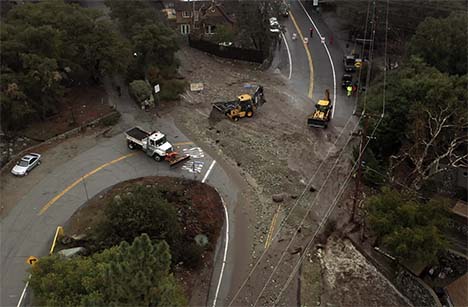Managing our flood of storm water

Images of locally swollen rivers and reservoirs, snow-capped mountains and flooded streets have been a common sight over the past few weeks. At one point last week, the normally dry riverbeds leading to the San Antonio Dam from the San Gabriel Mountains became a rushing torrent of water headed south.
There’s no question it’s been a very wet winter for California. The state has already received more than 18 trillion gallons of water in February, enough water to supply nine million people for a year. The High Sierra mountains have also received a huge amount of snow, with Mammoth reaching the 35-foot snow threshold, enough to ski on through July.
Check out our video from our recent storms
This is all great news for the state’s drought troubles, which rely heavily on that high sierra snow pack to fill our reservoirs all year round. Around the Claremont area, reservoirs are full, with some releasing water 24/7 to manage to flow of water from the mountains.
We have rarely seen water in the small reservoir near the Claremont Wilderness Park, except for this year with a consistent flow of rain keeping it filled. At the San Antonio dam north of Claremont, the large pools south of the dam remain full to help manage water flow. The streams headed to t
Even Claremont, where over five inches (or more) of rain dropped this month, cannot keep up with San Diego where over 10 inches fell, enough rain for the entire winter season. And the month is not even over yet.
With all the snow in the mountains, travel to those white covered mountains has been a nightmare because of slick roads and inexperienced drivers. As reported in a COURIER video, after being snow starved from years of drought conditions, all mountain destinations have been gridlocked because of the sheer number of people driving to visit. Below average temperatures have added to poor road conditions because of the melting snow turning to ice.
So is the drought over? The majority of California now is classified as abnormally dry, the lowest drought rating. That’s a lot better than severe or extreme drought ratings from a year ago. Although all this is good news for residents, our need to conserve water is critical in helping the state manage our water resources. So let’s keep up the good work!
It’s not all gloom and doom traveling to the Southern California mountains. With a little planning—leave early, bring chains, have hotel reservations, dress for very cold weather, bring water and fill up your car with gas—can reduce stress when visiting our wonderful winter wonderland.
—Peter Weinberger
pweinberger@claremont-courier.com








0 Comments